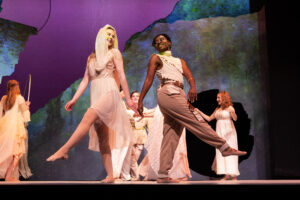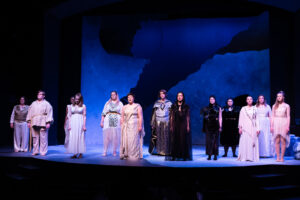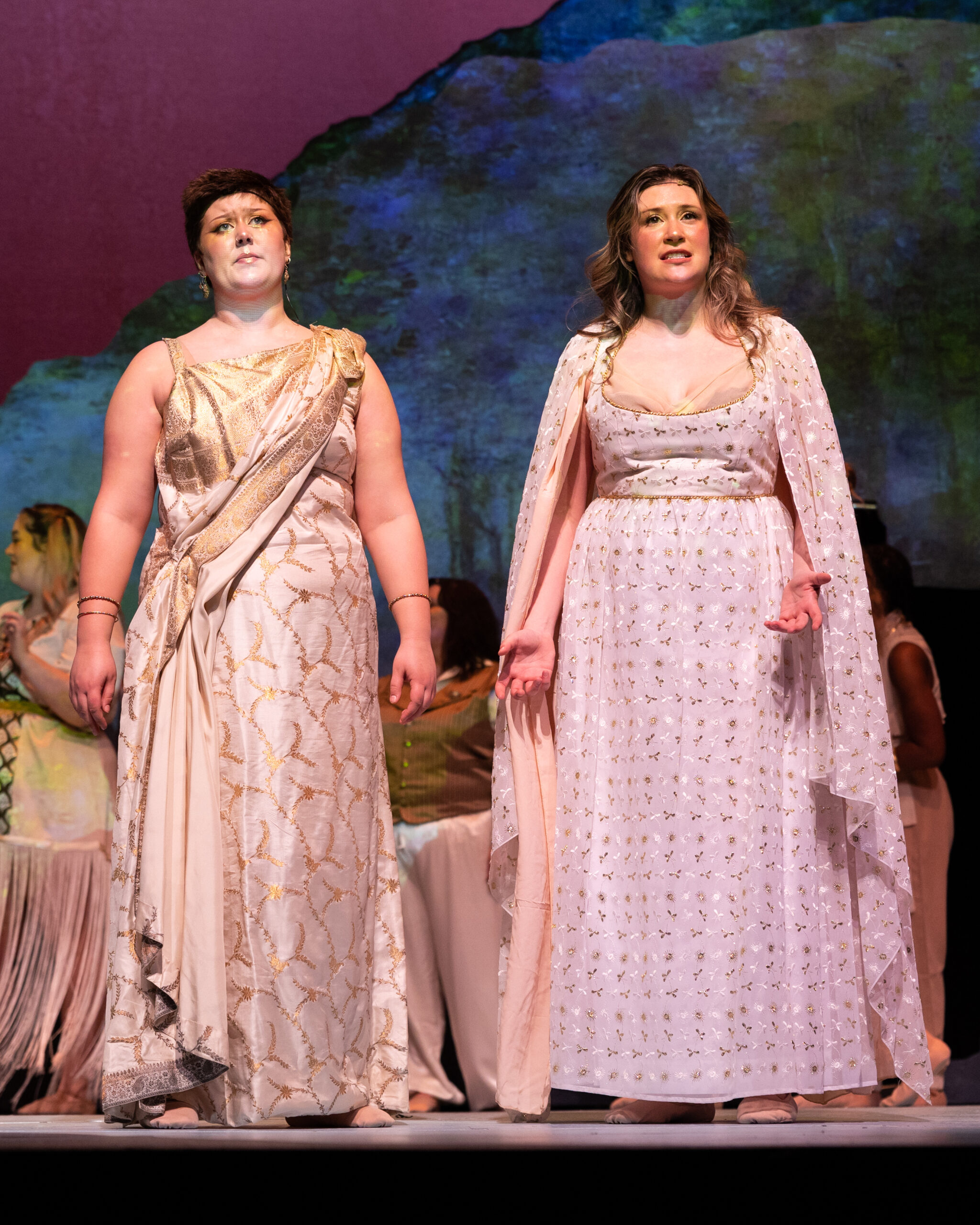As the final act in their main stage season, the USM Department of Theatre has produced their show of Eurydice Rising, in collaboration with the opera workshop program and Rachel Price Cooper. The story follows the Greek myth of Orpheus, a man who was blessed by the gods with supernatural musical abilities, who follows his bride Eurydice into the underworld to bring her back to the land of the living, and away from Hades, the god of the underworld. The production relied on elements of opera, dance, and acting performances to create a strong, final product.

One of the first things that stuck out to me prior to the show was the set. It was made up of layered, gray, and flexible walls, with openings high and low for cast members to appear on stage. This set would’ve worked really well for the department’s production of Into the Woods. Although it definitely served its purpose in this production, the mystical energy that this set would have suited the previous production a bit more than the set that was used. The set also had detailed projections of the settings, such as meadows and fields, which worked really well to create the changing atmospheres of the show.
The characters of Orpheus and Eurydice were each played by three separate pairs of actors on stage, seemingly to communicate that Orpheus and Eurydice could’ve looked like anybody. A lot of the dialogue was fixed to address the characters with singular-they pronouns so that the gender of each character could remain ambiguous. I thought that this was a very creative way to add a new layer of meaning to the show, especially where the original myth is very rigid in its description of events and characters. It makes it more open-ended for the audience to interpret the meaning of Eurydice Rising.
In combining the prowess of three performers to characterize both Orpheus and Eurydice, respectively, Kaleigh Hunter, Shae-Lynn Pagurko, and Bella St. Cyr each brought separate energies of Eurydice being a person of wonder, perseverance, hope, and an independent spirit. Even as the fate of Eurydice is one in which they are forced to stay in the underworld, Eurydice’s final lament is one that offers hope as they believe they can find their way in this new world, similar to how they lived in the world above. Lucious Finston-Fox, Rebecca Goff, and Oliver Scott offered up an Orpheus who was a passionate, vulnerable, and brave person chasing after their bride, and who after their ordeal now has a new perspective on life. Although they have lost their great love, they can now use their musical gifts to heal, and change the world.

One character that stuck out to me was Hades, played by Jack Dodd. Through his operatic introduction, Dodd added a lot of flair to the character that was almost reminiscent of the characterization in the animated Disney film, particularly as he interacted with Persephone (Caroline Woods) and Eurydice. As Orpheus rescues Eurydice from Hades, the latter is sympathetic to the pair, and offers them freedom, though cautions them that should Orpheus turn around to look for Eurydice as they climb back toward the land of the living, Eurydice will be forced to remain in the underworld forever. The gentleness of Hades contrasted heavily with my own understanding of the character, influenced by Disney and other popular media, where I expected him to be both flamboyant and spontaneous in presentation, yet malicious and evil in intent.
The overall production was a grand showcase of the amount of talent and creativity the Department of Theater has in its arsenal. The dance and opera elements used as integral parts of the show are a testament to the strength of the department’s faculty, as well as its student performers.

